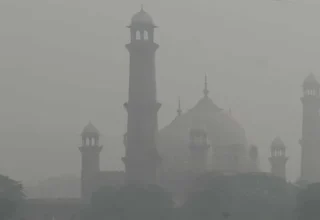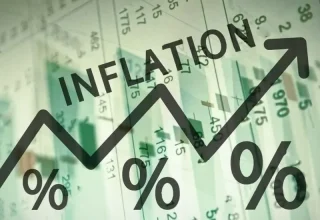
Air pollution in Lahore and several other cities across Punjab has reached dangerous levels as cooler temperatures and winds from India have worsened smog conditions across the region, according to the Punjab Environmental Protection Agency (EPA).
Fresh data from the EPA and the province’s advanced Smog and Climate Monitoring System shows that Lahore’s Air Quality Index (AQI) has climbed to 211, placing it in the “very unhealthy” category for human health.
According to IQAir, a global air quality monitoring platform, Lahore currently ranks as the most polluted city in the world, surpassing India’s Kolkata and Delhi, which recorded AQI levels of 154 and 149 respectively by early afternoon.
EPA officials stated that polluted winds from India have contributed to an increase in particulate matter (PM2.5), the fine particles that pose serious respiratory and cardiac health risks. Wind speeds between 1 to 3 kilometers per hour have prevented the dispersion of pollutants, trapping toxic air closer to the ground.
Between midnight and 7 a.m., the AQI levels across Punjab remained critically high: Gujrat (228), Gujranwala (226), Lahore (211), Kasur (182), Narowal (177), Dera Ghazi Khan (166), Faisalabad (161), and Sahiwal (147), among others. The province’s average AQI stood at 160, far exceeding the World Health Organization (WHO) safe limit.
The Smog Monitoring Centre reported that pollution levels peaked between 6 a.m. and 11 a.m., with minor improvement expected in the afternoon, while a renewed spike in pollution is anticipated in the evening, with AQI possibly rising again to 185.
Environmental and health experts have urged citizens—particularly children, the elderly, pregnant women, and those with respiratory or heart diseases—to stay indoors, keep windows closed, and avoid unnecessary outdoor activity.
Senior Provincial Minister Maryam Aurangzeb emphasized that combating pollution requires a collective effort, stating, “Every citizen must play a role in curbing environmental pollution. This is not just a government task but a shared social responsibility. By following precautionary measures, we can confront the impact of climate change.”






























